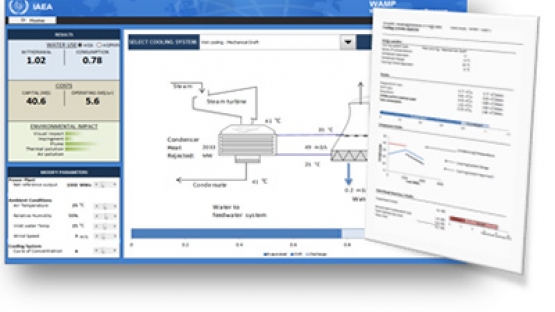The IAEA has developed and released the Water Management Program (WAMP), which is freely available to all Member States and can be used for the estimation of water needs in NPPs especially for water cooled nuclear power plants. The program estimates both the needs for cooling water and other essential systems. Moreover it helps in the selection process of cooling systems by evaluating three different criteria: Water resources, environmental, economical.
Efficient Water Management in Nuclear Power Plants
Efficient management of water at nuclear power plants is important during the entire phase of construction, operation and maintenance of any nuclear power plant. Water management addresses the issue of securing water for condenser cooling during operation, for construction (during flushing phase), as well as inventory control, including makeup to primary coolant system and discharge from radioactive liquid waste treatment system. Providing available options and guidance will help newcomer countries considering embarking on nuclear power in their decision-making for water management strategy.
Countries in water scarce regions, and considering the introduction of nuclear power, may show concern on the requirement for securing water resources to operate nuclear power plants and search for strategies for efficient water management. Experience has shown that nuclear power plants are susceptible to prolonged drought conditions, forcing them to shut down reactors or reduce the output to a minimal level. In other cases, it has been the developing environmental issue that resulted in regulations which limit the possibility for water withdrawal as well as water discharge. As water and power are inseparably related, reducing the water use and consumption for nuclear power plants is therefore likely to help such countries interested in introducing nuclear power in their energy supply mix.
Water Management Program (WAMP)

The main features of WAMP are:
- Interactive comparison of different cooling systems (open loop, wet, dry), reactors (light, heavy water) and site conditions (temperature, humidity, wind etc.)
- Mass balance and conceptual sizing of components eg. cooling pond
- Water withdrawal and consumption estimation
- Estimation of economics (capital and operating costs) for cooling systems
As WAMP is still under continuous development, the current available version is released as a beta-version.


